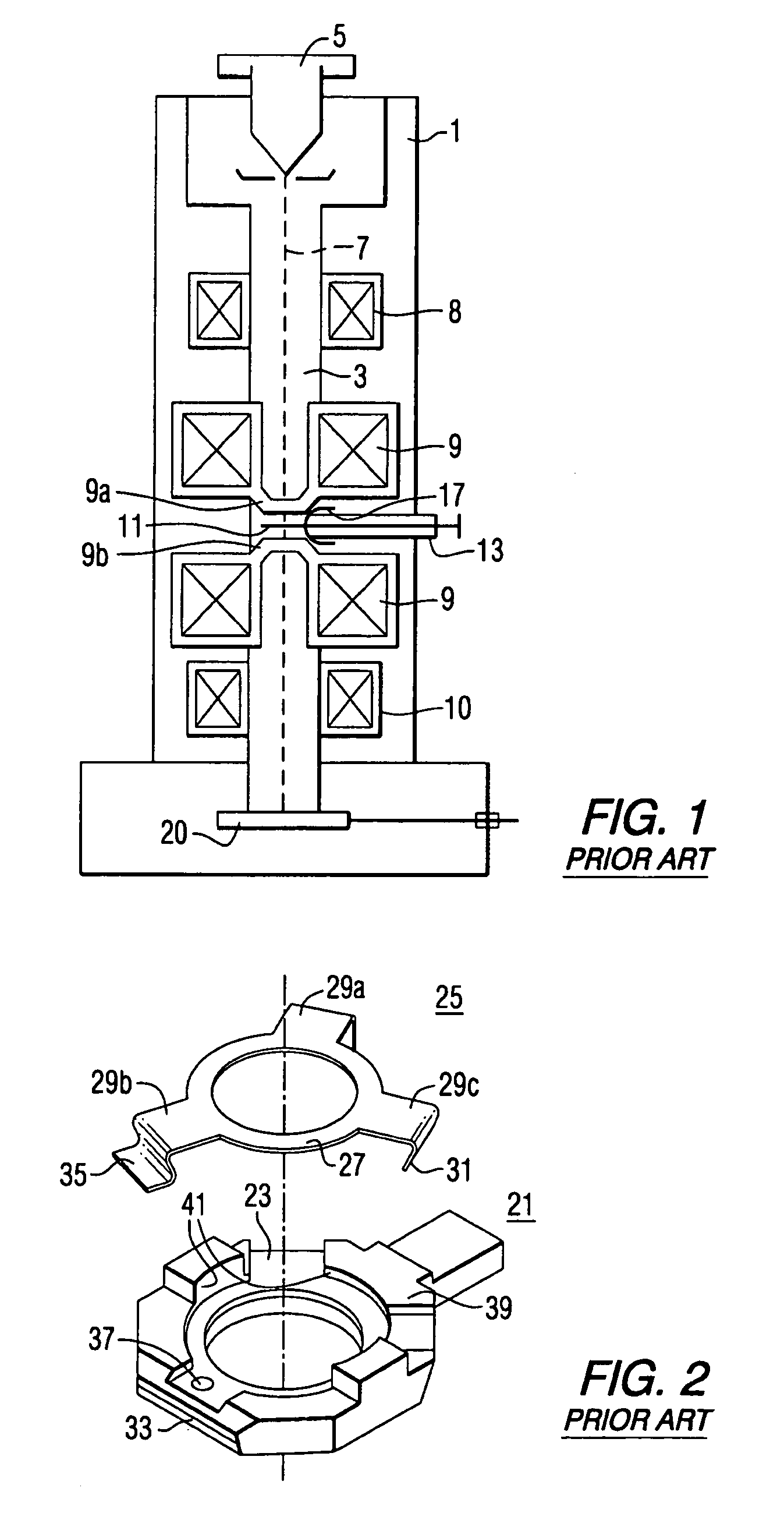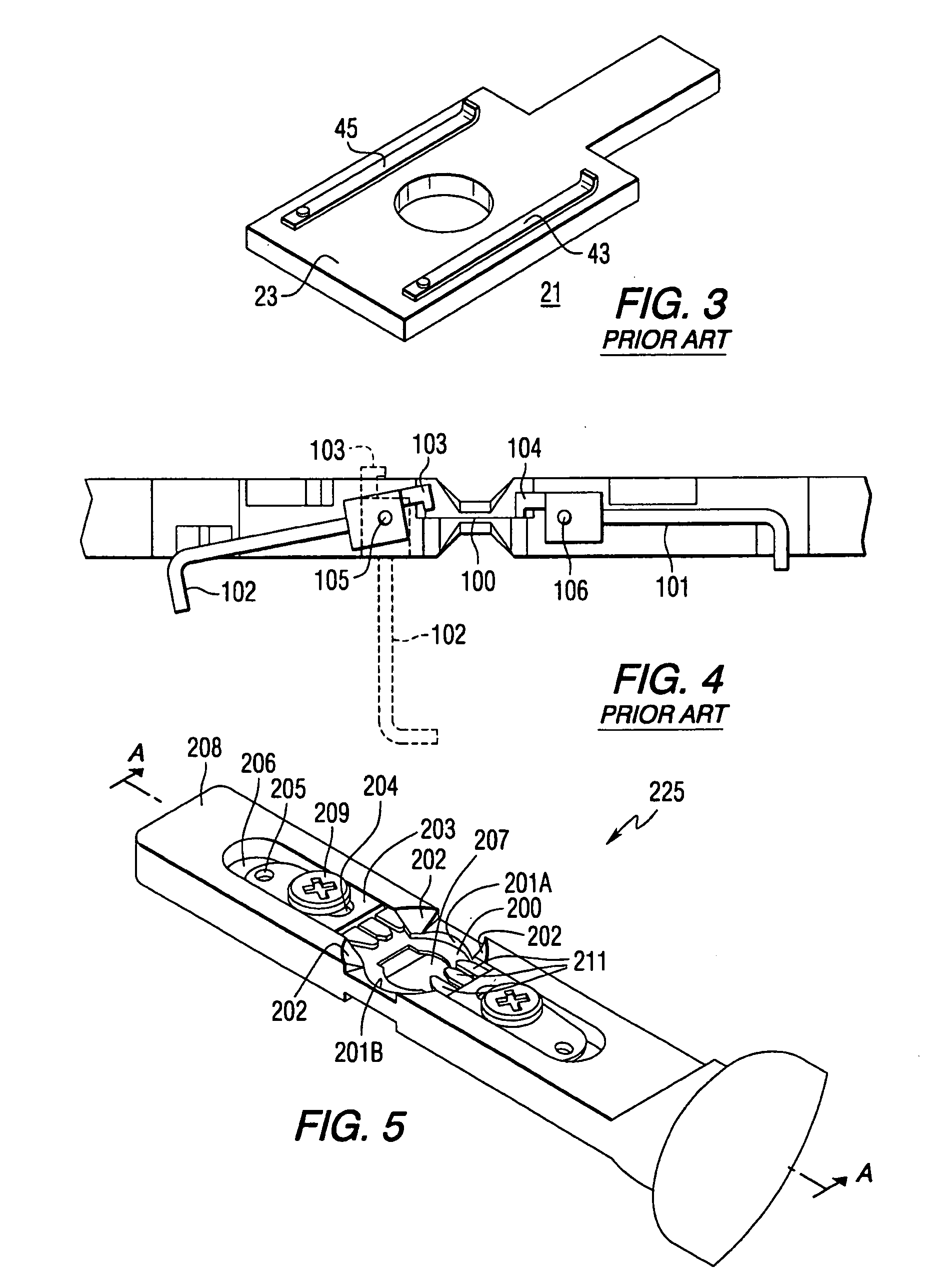Specimen holding apparatus
a technology for holding apparatuses and specimens, applied in the direction of apparatus for force/torque/work measurement, tension measurement, instruments, etc., can solve the problems of affecting the accuracy of specimen installation and removal, so as to improve the distribution of restraining forces, the process of installing and removing specimens is simple and reliable, and the effect of precise visual alignmen
- Summary
- Abstract
- Description
- Claims
- Application Information
AI Technical Summary
Benefits of technology
Problems solved by technology
Method used
Image
Examples
Embodiment Construction
[0028]FIG. 5 is an isometric view of a specimen holder 225 according to a first embodiment of the present invention. FIG. 6 is a cross-sectional diagram of the specimen holder 225 shown in FIG. 5 taken along lines A-A of FIG. 5. Specimen holder 225 includes a circular supporting surface 200 for supporting a circular specimen to be viewed or imaged in a microscope system such as a charged particle beam device. Supporting surface 200 is partially bounded by edges 201A and 201B extending vertically from supporting face 200 on opposite sides of supporting surface 200. Edges 201A and 201B each comprise sections of a cylindrical surface. Conical portions 202 extend from the top of edges 201A and 201B, thereby leaving a cut-out region in between conical portions 202, which cut-out region promotes viewing of a specimen at high tilt angles. Conical portions 202 also serve to guide a specimen into the region of the supporting surface 200 bounded by the edges 201A and 201B. Restraining element...
PUM
| Property | Measurement | Unit |
|---|---|---|
| distance | aaaaa | aaaaa |
| distance | aaaaa | aaaaa |
| thickness | aaaaa | aaaaa |
Abstract
Description
Claims
Application Information
 Login to View More
Login to View More - R&D
- Intellectual Property
- Life Sciences
- Materials
- Tech Scout
- Unparalleled Data Quality
- Higher Quality Content
- 60% Fewer Hallucinations
Browse by: Latest US Patents, China's latest patents, Technical Efficacy Thesaurus, Application Domain, Technology Topic, Popular Technical Reports.
© 2025 PatSnap. All rights reserved.Legal|Privacy policy|Modern Slavery Act Transparency Statement|Sitemap|About US| Contact US: help@patsnap.com



